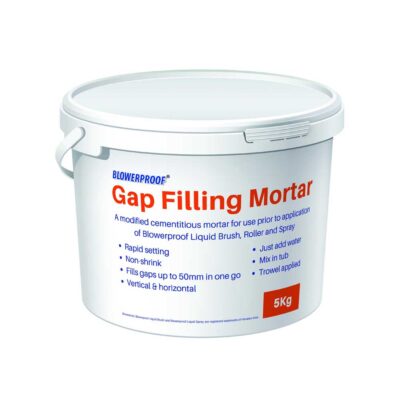“We live in an era when our homes have the potential to be energy efficient, comfortable and affordable places to live, despite ever increasing fuel prices. In the past it could be argued that we didn’t know how to achieve this but today we have no excuses. Yet, on the whole, we continue to build new houses to a pathetic standard, and our refurbishments commonly concentrate on kitchens and bathrooms, rather than investing to provide warm and pleasant places to live without ruinously high fuel bills.” this is an extract from the blog of Ben Adam-Smith a campaigning documentary film maker and creator of a film about poor quality building called ‘The Future of Housing ‘ there is a short clip below to help illustrate how poor quality construction can directly affect us all.
There is mounting evidence to suggest that buildings that are being designed to achieve thermal performance standards, including the Building Regulations, are in some cases consuming in excess of 70-100% more energy than the predicted values.[1]
Plus, some would say more worryingly, that the building Regulations do not set an adequate base level of performance and facilitate the delivery of many buildings of poor quality into the UK housing market.
But….don’t blame the Building Regulations they are not designed to deliver quality they are a set of minimum standards, all too often they are described, used and promoted as a benchmark; something to aim for: we must remove the presumption prevalent in the UK that they provide some form of performance guarantee……….they don’t.
The Building Regulations contain 14 individual sections that, in their own words, ‘contain the rules for building work in new and altered buildings to make them safe and accessible and limit waste and environmental damage’[2] nothing there about quality or performance then.
 Within the Building regulations Part L is the section on ‘Conservation of Fuel and Power’ which relates to the thermal efficiency / performance of buildings. This is important because it covers the buildings potential (target) level of efficiency and therefore comfort, it also has implications for running costs and is linked to (largely erstwhile) carbon reduction targets.
Within the Building regulations Part L is the section on ‘Conservation of Fuel and Power’ which relates to the thermal efficiency / performance of buildings. This is important because it covers the buildings potential (target) level of efficiency and therefore comfort, it also has implications for running costs and is linked to (largely erstwhile) carbon reduction targets.
In particular section 43 of Part L deals specifically with a buildings air permeability, or airtightness, recognising this as a major factor in a buildings energy performance Interestingly the word “airtightness” wasn’t even a word used in connection with domestic buildings, until it was introduced and formalised (through building regulations in the early 2000’s) and has now become a key part of Part L, section 43 goes on to describe how this the means by which a buildings efficiency can be measured. Compliance with Part L is mandatory throughout the UK[3] it applies to new buildings and certain types of work in existing buildings, and is there to enforce minimum standards of energy efficiency.
 Airtightness is measured as m3/ (h.m2)@50Pa given as the flow of air (m3/hour) in or out of the building, per square metre of the building internal envelope at a reference pressure of 50 Pascal’s between the inside and outside of the building. Current Building Regulations require 10 m3/ (h.m2)@50Pa, for a new build property, that’s 10 cubic metres of exchanged air per hour at 50 Pascal’s. This is a low standard by anyone’s reckoning, examples of just how bad this is in reality are easily found. A new build terraced house with a tested result of 9.1 m3/ (h.m2)@50Pa passes Building Regulations but the tester pointed out (see clip below) that with external wind at an average of 20mph it would take just 6 and a half minutes to exchange all the heated air from within the building resulting in an expected increase in annual heating bills of around 50%.[4]
Airtightness is measured as m3/ (h.m2)@50Pa given as the flow of air (m3/hour) in or out of the building, per square metre of the building internal envelope at a reference pressure of 50 Pascal’s between the inside and outside of the building. Current Building Regulations require 10 m3/ (h.m2)@50Pa, for a new build property, that’s 10 cubic metres of exchanged air per hour at 50 Pascal’s. This is a low standard by anyone’s reckoning, examples of just how bad this is in reality are easily found. A new build terraced house with a tested result of 9.1 m3/ (h.m2)@50Pa passes Building Regulations but the tester pointed out (see clip below) that with external wind at an average of 20mph it would take just 6 and a half minutes to exchange all the heated air from within the building resulting in an expected increase in annual heating bills of around 50%.[4]
The short video below is an extract from The Future of Housing which clearly illustrates the point made above, its well worth a watch, most people who watch this have exactly the same astonished and angry reaction as the owner of the house.
So how do you reduce wastage and increase the energy efficiency of a building, in simple terms insulate well and prevent leakage….. and that sits right at the heart of what needs doing.
First two very pared down observations about airtightness.
- Airtightness is effected on the inside of a building, on the warm or internal side of the insulation; the function is to prevent leakage. Variously called vapour check, vapour barrier, vapour control, or airtight membrane
- Wind and weather proofing is effected on the outside of a building the function is to prevent adverse weather penetrating the building fabric and reducing the insulation’s capacity to perform and prevent deterioration in the building fabric. Variously called vapour control, breather membrane, vapour open membrane, vapour permeable membrane, vapour open underlay and sometimes additionally described as being diffusion open.
 Together this ‘wrap’ for the insulated layer allows moisture control geared to our climate with protection from the elements on the outside and leakage prevention on the inside. The airtightness won’t increase the U value of the insulation but it does ensure that the insulation functions to its optimum performance and more likely to achieve designed U Value. It cannot be over emphasised that airtightness and vapour control go hand in hand they work together to solve different problems.
Together this ‘wrap’ for the insulated layer allows moisture control geared to our climate with protection from the elements on the outside and leakage prevention on the inside. The airtightness won’t increase the U value of the insulation but it does ensure that the insulation functions to its optimum performance and more likely to achieve designed U Value. It cannot be over emphasised that airtightness and vapour control go hand in hand they work together to solve different problems.
Airtightness means designing and installing a continuous seal around the internal fabric of the external envelope to eliminate unwanted draughts. Once the airtightness layer is in place and sealed with flexible and durable tapes, seals and glues, it ensures that the insulation functions to its optimum performance, saving energy and drastically reducing carbon emissions for the lifetime of the building. The airtight layer also ensures that interstitial condensation risk is minimised, ensuring no structural damage from moisture, mould, rot and damp.
If you start with the basic principles and keep the products to a proven few then you will be less susceptible to industry ‘noise’ creating confusion or quandary over what product to choose. It would be disingenuous to say the there won’t be times when technical advice is be needed and that is easily available through our technical support team. What it does mean is that for those manufacturers who do it well and make it look simple, take them on trust you are benefiting from years of robust and thorough testing and R&D arriving at a proven and purpose specific product. Their expertise should be your comfort.
Our thanks to Ben Adam-Smith at Regen Media for his quotes and permission to use a clip from the programme see the whole film by clicking here
[1] Lessons from Stamford Brook, Understanding the Gap between Designed and Real Performance, Evaluating The Impact Of An Enhanced Energy Performance Standard On Load-Bearing Masonry Domestic Construction, Partners in Innovation Project: CI 39/3/663, Report Number 8 – Final Report, Leeds Metropolitan University
[2] DCLG Policy paper 2010 to 2015 government policy: building regulation
[3] Check local variations for Scotland, Wales & Northern Ireland
[4] The Future of Housing Paul Jennings 2016




